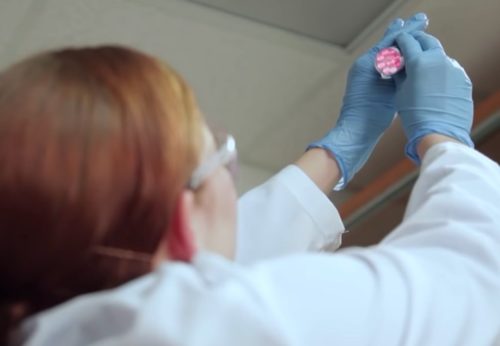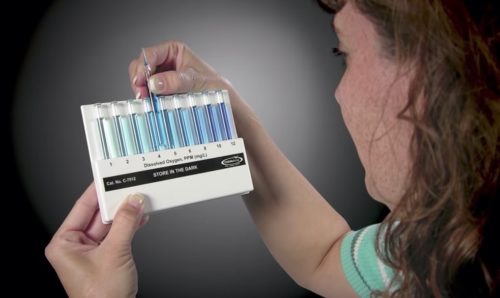Colorimetric Water Analysis: Proven, Practical, Precise
As water-based industries continue to expand and evolve, the need for water analysis grows with them. New regulations and market dynamics shift the testing needs to lower cost, more precise readings, and faster reporting. Companies look to high-tech advancements like smart meters and on-line analyzers for efficiency and accuracy but continue to rely on proven colorimetric testing methods to meet their needs.

How Colorimetry Works
Colorimetry is the use of colored compounds to determine the concentration of a target chemical compound. It is one of the earliest and most reliable forms of water analysis and is used to test for a wide array of analytes. The target analyte causes the sample solution to change color proportionally to its concentration in the solution, and that change in color can be measured visually or instrumentally.
Traditionally, laboratories stocked the individual chemical components and analysts prepared reagents in bulk from scratch. Often excess expired reagent had to be disposed. Test procedures involved making multiple volume and mass measurements requiring training to master these techniques.

The Benefits of Colorimetric Water Analysis Test Kits
Test kits offer advantages to the analyst in that they save time, are appropriate for field applications, and are generally user-friendly. Relatively unskilled staff can be trained to make accurate determinations using premixed liquid or solid reagents delivered in kit packaging.
Colorimetric test kits are among the simplest, quickest and most adaptable means by which water analysis may be performed in a host of environments and conditions.
- Tests often require little to no sample preparation and can be performed in minutes.
- Reagents are labeled with expiration dates.
- Technical support is typically available.
- Test kit quality control is the responsibility of the manufacturer.
- Measurement ranges vary depending on test type and analyte, but most tests can measure below one part per million (ppm), allowing for analysis even at low concentrations.
- Colorimetry is adaptable to field or lab work.
- Low-cost visual test kits are portable and perfect for testing in the field.
- Instrumental test kits may be better suited for lab work where more precise results are required.
- Many instruments are small and portable, allowing precise results to be gathered in the field with ease.
When using a visual kit, the color of the test result is compared to a chart or comparator of colors to determine the concentration. For instrumental kits, the sample is analyzed in a spectrophotometer or colorimeter. These instruments measure the light absorbance at a specific wavelength which is then converted to the concentration of the analyte.

Colorimetric Water Test Kit Applications
Colorimetric test kits are available for many analytes essential to industrial operations. For example, petroleum refiners commonly measure ammonia, phenols, iron and sulfide. The wastewater treatment industry monitors ammonia, chlorine and phosphates. The medical and food & beverage industries, meanwhile, test for residual disinfectants (chlorine, hydrogen peroxide, ozone, peracetic acid) to ensure sanitization is being performed correctly.
Industrial water treatment professionals are charged with maintaining water treatment programs that help extend equipment life, maximize energy efficiency, and reduce downtime. They are focused on controlling scale, corrosion and microbiological fouling in boiler and cooling systems. They monitor parameters such as dissolved oxygen, bromine, molybdate and various oxygen scavengers in order to make informed decisions about treatment adjustments.

One common application of colorimetric testing is to spot check systems between reporting periods to document whether processes remain under control. Colorimetric test kits are also used alongside on-line analyzers to verify their performance.
Many colorimetric test methods have been reviewed by the USEPA and accepted for monitoring drinking water and wastewater. Examples include chemical oxygen demand (COD) and chlorine.

Conclusion
Colorimetric test kits continue to be practical tools for analysts. Their low cost, convenience, flexibility, accuracy and efficiency appeal to users in all industries. As testing needs evolve, colorimetric water analysis will continue to be an indispensable mainstay in the range of testing options. Analysts have been relying on CHEMetrics and its full line of visual and instrumental colorimetric water testing products for more than 50 years. Visit www.chemetrics.com to learn more.


